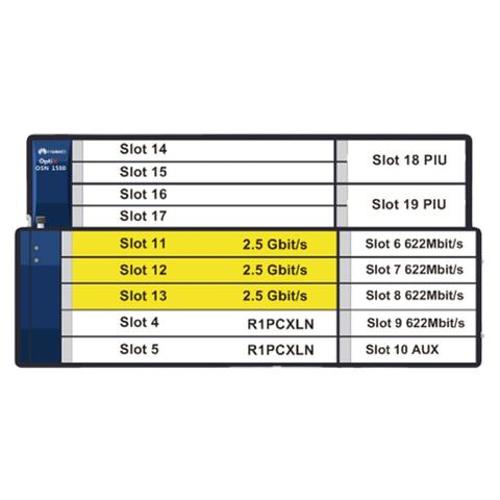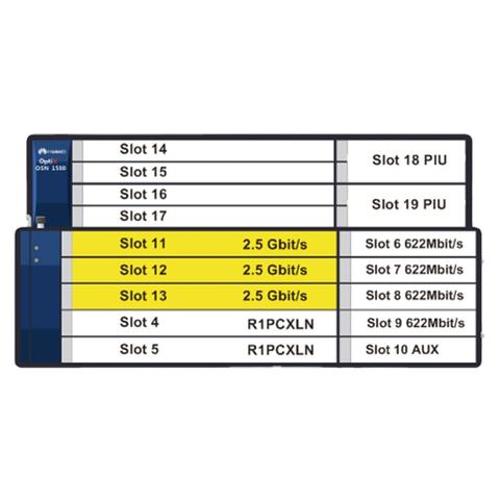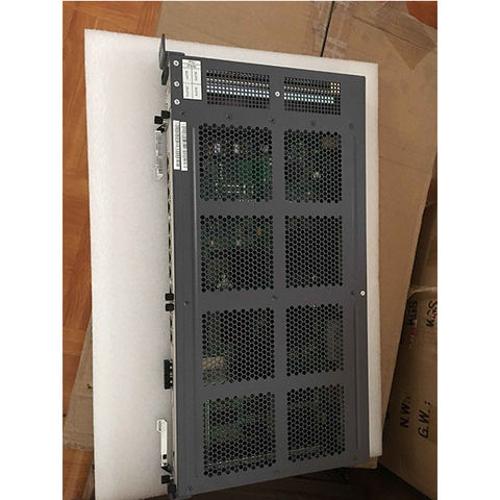OSN 3500 SDH MSTP Built-in PCM with STM-16 Multiplexer

Short Description:
| SDH protection | |
| Linear MSP | The Linear Multiplex Section Protection (LMSP) scheme is applicable to a point-to-point physical network, providing MS-layer protection for the service between two points. The OptiX OSN equipment supports 1+1 and 1:N LMSP. |
| MSP ring | The multiplex section protection ring (MSP ring) scheme provides MS-level protection for services between nodes on a ring network. The OptiX OSN equipment supports three types of MSP ring: two-fiber unidirectional MSP, two-fiber bidirectional MSP, and four-fiber bidirectional MSP. |
| SNCP E1 SNCP SNCMP SNCTP | The SNCP scheme protects the service that is across subnets. The SNCP is based on the dual fed and selective receiving mechanism. The subnet can be a chain, a ring, or a more complex network. E1 SNCP is a protection scheme that allows dual transmission and selective reception of pulse code modulation (PCM) services. The SNCMP scheme provides functions similar to the SNCP scheme. With regard to their difference, the SNCP scheme provides 1+1 protection and the SNCMP scheme provides N+1 protection (in which multiple protection paths protect one working path). The SNCTP scheme provides protection paths at the VC-4 level. When the working path is faulty, all its services can be switched to the protection path. |
| Dual-node interconnection (DNI) protection | The DNI network topology protection scheme effectively enhances the reliability of inter-ring services. The DNI realizes the protection of services between two rings, which are networked by the equipment from different vendors and adopt different protection schemes. The DNI provides protection in the case of fiber failure and node failure. |
| Fiber-shared virtual trail protection | When the fiber-shared virtual trail protection is used, an STM-64, STM-16, STM-4 or even STM-1 optical channel is logically divided into several lower order or higher order channels. These channels are then connected to other links at the channel layer to form rings. In the case of the rings at the channel layer, protection schemes such as the MSP, SNCP and non-protection can be set accordingly. |
| Optical-path-shared MSP | In the optical-path-shared MSP scheme, an optical interface can be configured into multiple MSP groups, so multiple MSP rings can share the same fiber and optical interface. |
| Ethernet protection | |
| LPT | As a protection scheme based on links, LPT enables the pass-through of the states of the point-to-point link and point-to-multipoint link. In this manner, LPT realizes the network level protection for the transmission of point-to-point private line services and for the transmission of the point-to-multipoint convergence services. |
| LCAS | The LCAS function can be used to dynamically adjust the bandwidth and protect virtual concatenation, whereby making the network more robust and flexible. |
| STP/RSTP | The STP and RSTP are used in the loop network. The two protocols realize routing redundancy by adopting certain algorithms and break the loop network into a loop-free tree network, thus preventing packets from increasing and cycling in an endless manner in the loop network. In this manner, the application of the two protocols can prevent the occurrence of the broadcast storm and MAC address table flapping. The RSTP is an optimized version of the STP and implements all the functions of the STP. With the application of the RSTP, the network convergence is quicker. In addition, in the case of a link failure, the blocked ports can be enabled to restore services quickly. |
| MSTP | Like Spanning Tree Protocol (STP) and Rapid Spanning Tree Protocol (RSTP), Multiple Spanning Tree Protocol (MSTP) is used to prevent loops on a network and a resultant broadcast storm. |
| ERPS | Based on the traditional Ethernet mechanism, the Ethernet ring protection switching (ERPS) uses the ETH OAM function and the ring automatic protection switching (R-APS) protocol to achieve fast protection switching on the Ethernet ring network. |
| RPR | Resilient packet ring (RPR) is an emerging Layer 2 link technology that integrates the multi-protocol label switching (MPLS) and virtual metropolitan area network (VMAN) technologies. RPR has a fixed point-to-multipoint architecture, provides the statistical multiplexing function, realizes fairness sharing of bandwidths, accesses large granularities, and features high-efficient bandwidth utilization. |
| ATM protection | |
| VP-Ring/VC-Ring protection | The OptiX OSN equipment provides protection for virtual paths (VPs) and virtual channels (VCs), and protects ATM services through a dual fed and selective receiving mechanism. |
xxxxxxx.





